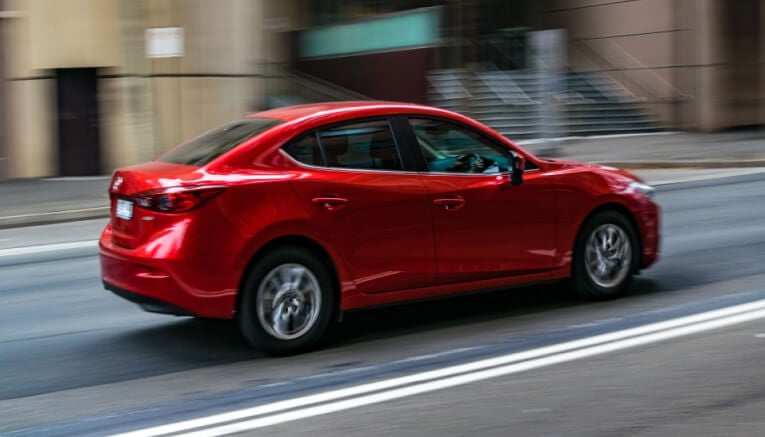When it comes to reimbursing employees for business-related driving, companies have several options to choose from. Two popular methods are cents-per-mile (CPM) reimbursement and fixed and variable rate (FAVR) programs, each with its own set of advantages and considerations.
Choosing the right mileage reimbursement method can help businesses maintain both employee satisfaction and company financial health. This article will explore both CPM and FAVR approaches, helping you determine which method aligns best with your business needs.
Cents-Per-Mile (CPM) Reimbursement Explained
Cents-Per-Mile reimbursement is a straightforward method where employees are paid a fixed rate for each mile driven for business purposes. The rate is often based on or close to the IRS standard mileage rate, which is updated annually to reflect average driving costs.
Related: Car Allowance vs. Mileage Reimbursement Explained | Which Method Is Right for Your Business?
This simplicity makes CPM an attractive option for many businesses, especially those with straightforward driving needs. One of the primary advantages of CPM is its ease of implementation and administration.
Employees only need to track their business mileage, and the reimbursement calculation is a simple multiplication of miles driven by the set rate. This simplicity not only reduces the administrative burden but also makes it easier for employees to understand their reimbursements.
Benefits of Cents-Per-Mile Reimbursement
CPM is particularly suitable for businesses with occasional drivers or those with relatively consistent driving patterns across different regions. It’s an excellent choice for small to medium-sized businesses that prefer a straightforward, easy-to-administer system.
The simplicity of CPM also makes it easier to budget for and explain to employees. Another advantage of CPM is its flexibility.
Companies can choose to use the IRS rate or set their own rate based on their specific needs and budget constraints. This allows businesses to tailor the reimbursement to their particular circumstances while still maintaining the simplicity of the system.
Fixed and Variable Rate (FAVR) Reimbursement Explained
The fixed and variable rate reimbursement method is a more complex approach that aims to provide a more accurate reflection of the actual costs incurred by employees when using their personal vehicles for business purposes. FAVR takes into account both the fixed costs of vehicle ownership and the variable costs associated with its use.
Related: Fixed and Variable Rate (FAVR) Reimbursement Programs Explained | How To Implement a FAVR Program
Under a FAVR program, employees receive two types of payments: a fixed amount to cover costs like insurance and depreciation, and a variable rate based on mileage to cover expenses like fuel and maintenance. This dual approach attempts to provide a more comprehensive reimbursement that accounts for regional cost differences and individual driving patterns.

Advantages and Challenges of Using FAVR
FAVR’s main advantage is its potential for greater accuracy in reimbursement. By considering both fixed and variable costs, it can provide a fairer compensation for employees who drive frequently or in areas with higher vehicle-related expenses.
This accuracy can lead to increased employee satisfaction and potentially reduce the risk of over or under-reimbursement. However, FAVR programs come with their own set of challenges.
They are more complex to administer and often require specialized software or third-party administrators to manage effectively. This complexity can lead to higher administrative costs and may be confusing for employees to understand.
Additionally, FAVR programs must adhere to specific IRS guidelines to maintain their tax-advantaged status.
Related: Is Mileage Reimbursement Considered Taxable Income?
Factors to Consider When Choosing a Reimbursement Method
The size of your business plays a crucial role in selecting the right reimbursement method. Smaller companies often find cents-per-mile reimbursement more manageable due to its simplicity.
Employee driving patterns are another important consideration. If your workforce has consistent mileage across different regions, cents-per-mile might be sufficient.
For companies with widely varying driving patterns, FAVR could provide more accurate reimbursement. Geographic distribution of your workforce can also impact your choice.
Cents-per-mile works well for businesses operating in areas with similar vehicle costs. FAVR might be more suitable for companies with employees spread across regions with varying expenses.
Consider your administrative capabilities. Cents-per-mile is easier to manage in-house, while FAVR often requires specialized software or third-party administrators.
Related: Employee Expense Reimbursement Explained (Full Guide)
CPM vs. FAVR: Implementation and Technology
Regardless of the method chosen, accurate mileage tracking is essential for proper reimbursement. Tools like TripLog can simplify this process significantly.
TripLog offers automatic mileage tracking, ensuring accurate records without burdening employees. This can be particularly beneficial for cents-per-mile reimbursement, where simplicity is key.
For companies using cents-per-mile reimbursement, TripLog can easily calculate reimbursements based on tracked mileage. This streamlines the process and reduces the potential for errors.
Conclusion: Choosing Between Cents-Per-Mile and FAVR
Both cents-per-mile and FAVR reimbursement methods have their merits. The best choice depends on your company’s specific circumstances and needs.
Cents-per-mile reimbursement offers simplicity and ease of administration. It’s often the better choice for smaller companies or those with straightforward driving patterns.
Related: What Do Most Businesses Pay for Mileage Reimbursement? | How Much To Reimburse Your Drivers’ Mileage
FAVR can provide more accurate reimbursement, especially for companies with diverse geographic locations and varying driving patterns. However, it comes with increased complexity and administrative requirements.
If you’re interested in moving away from manual mileage logs and setting up a modern mileage reimbursement, TripLog can help you every step of the way. Schedule a call with our friendly and knowledgeable sales team and get your team started in minutes!









